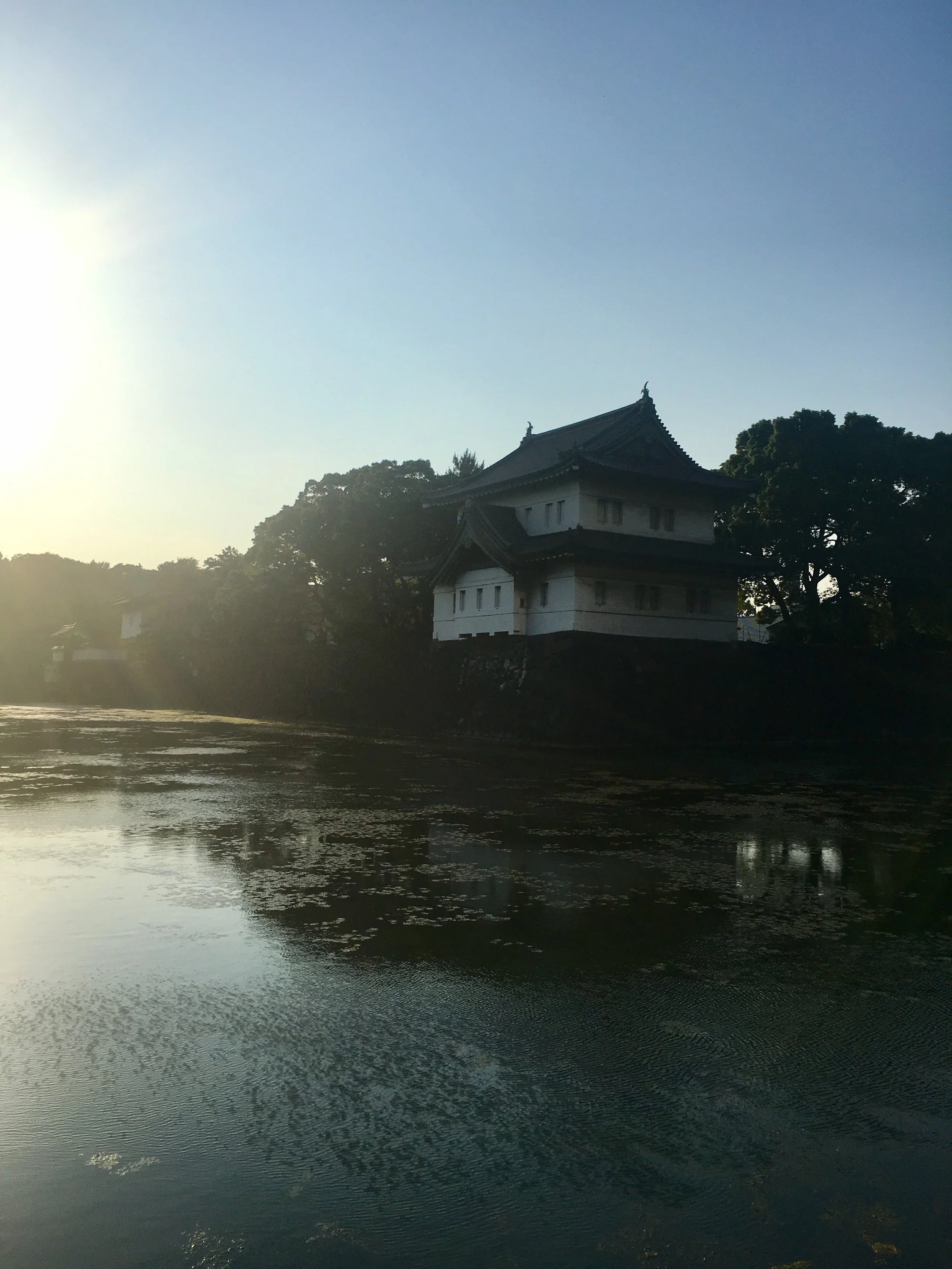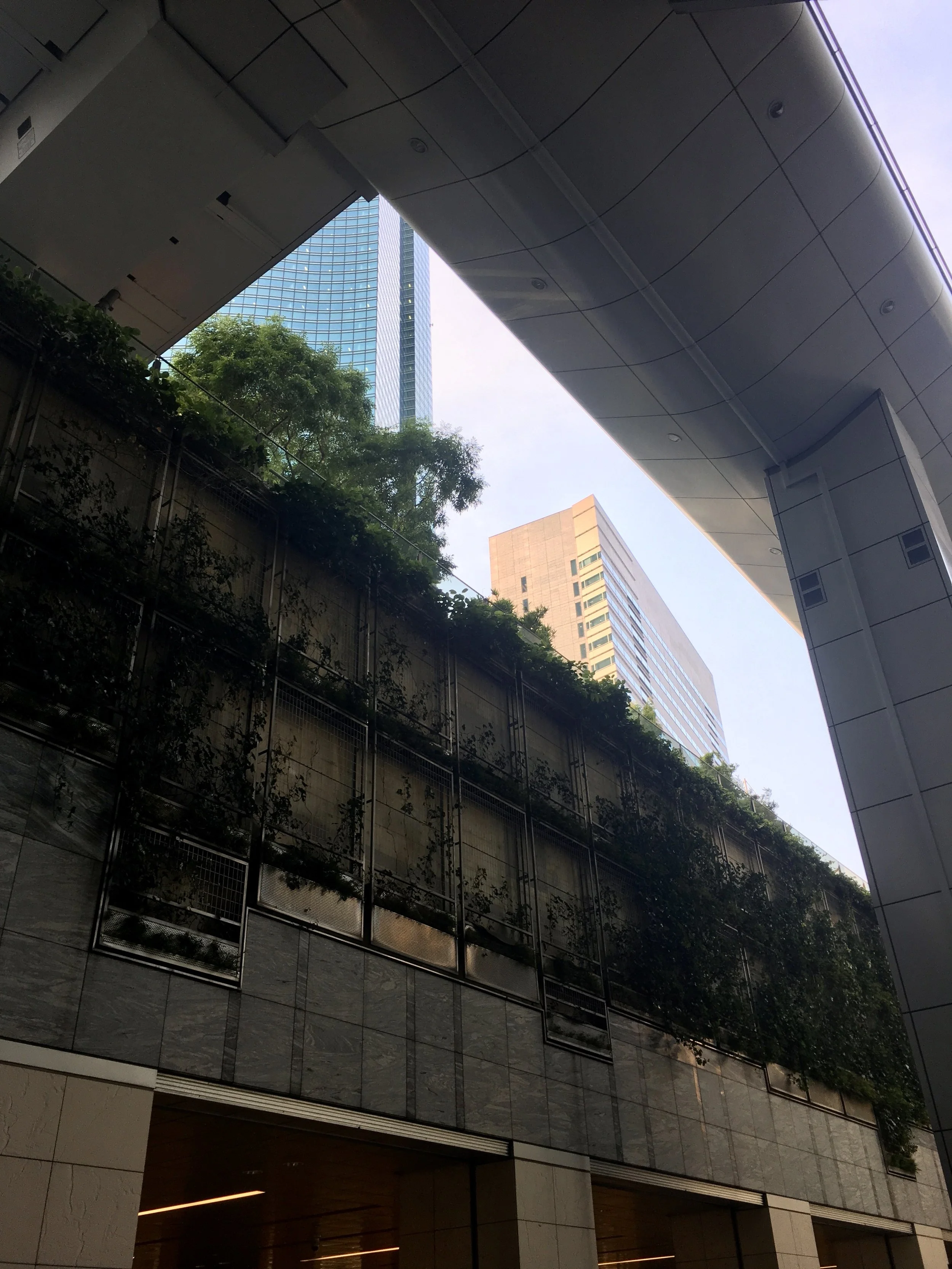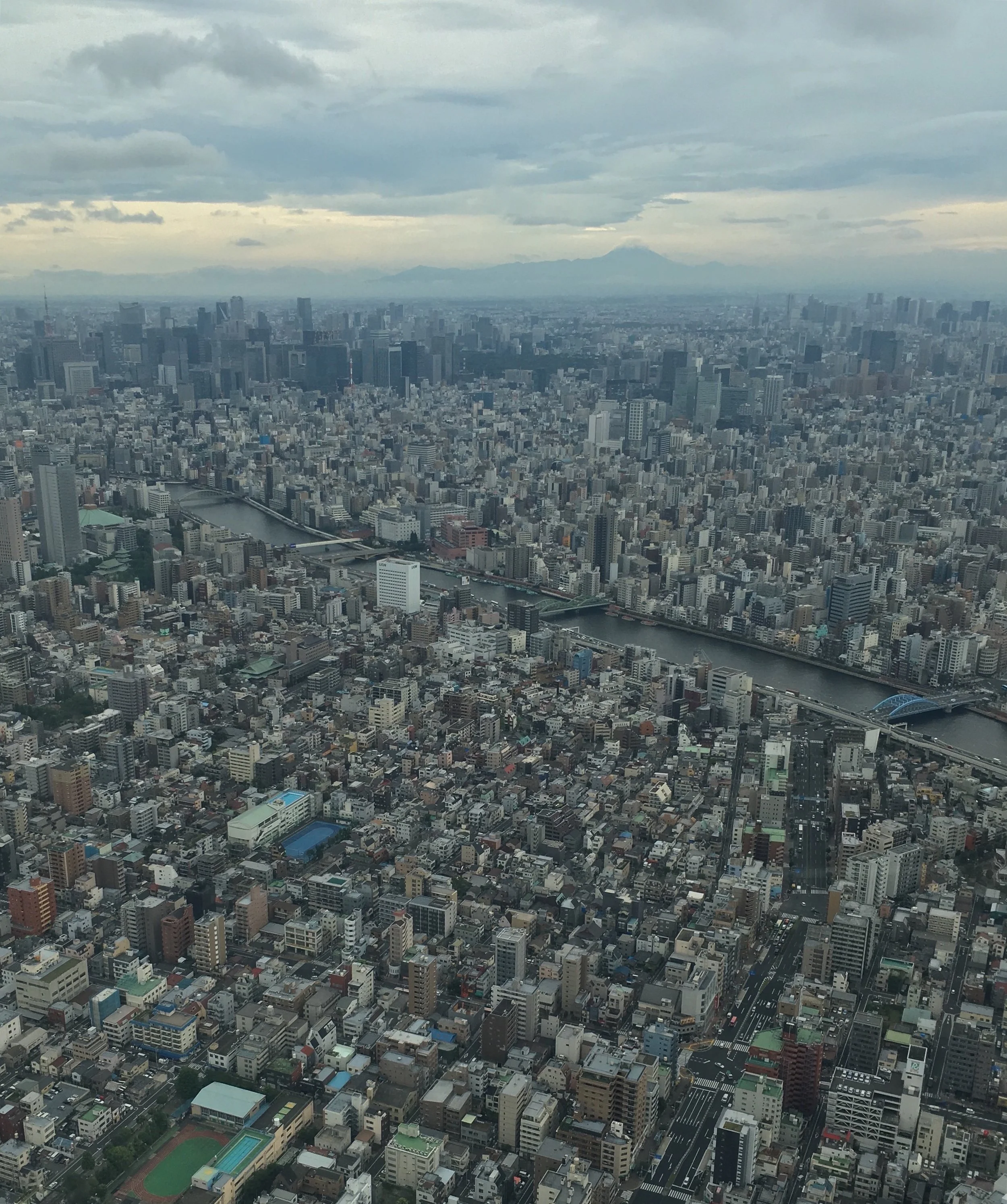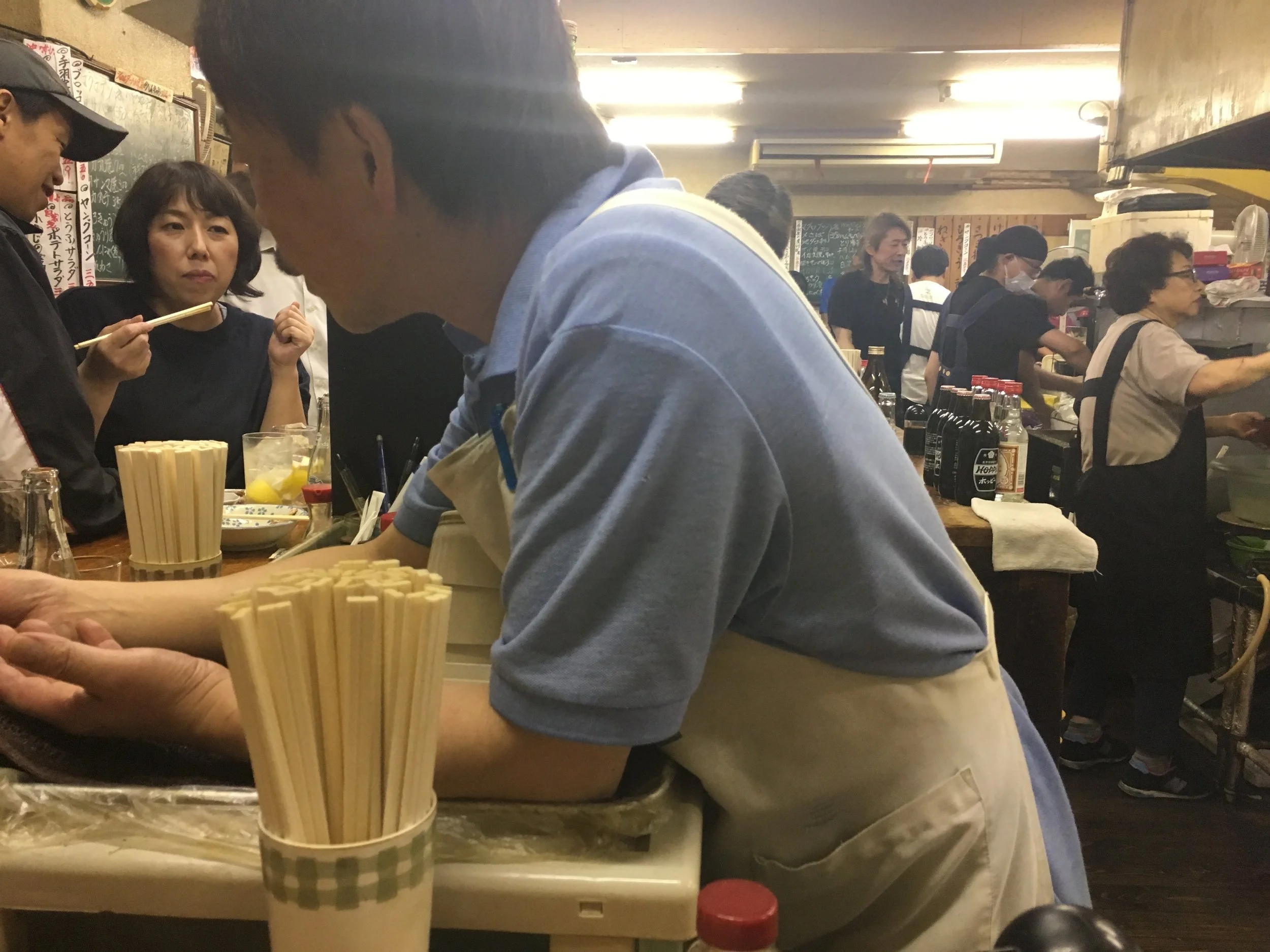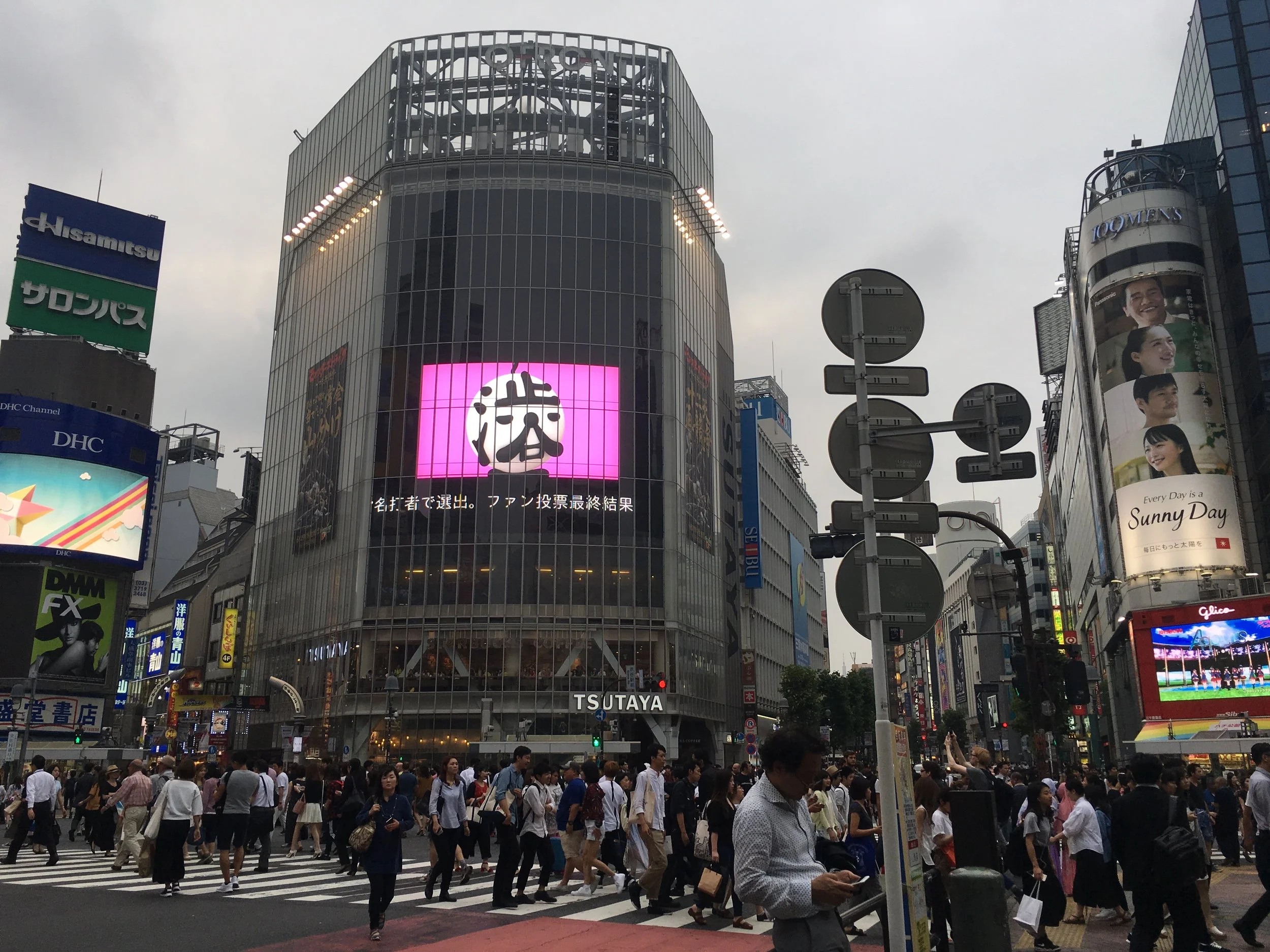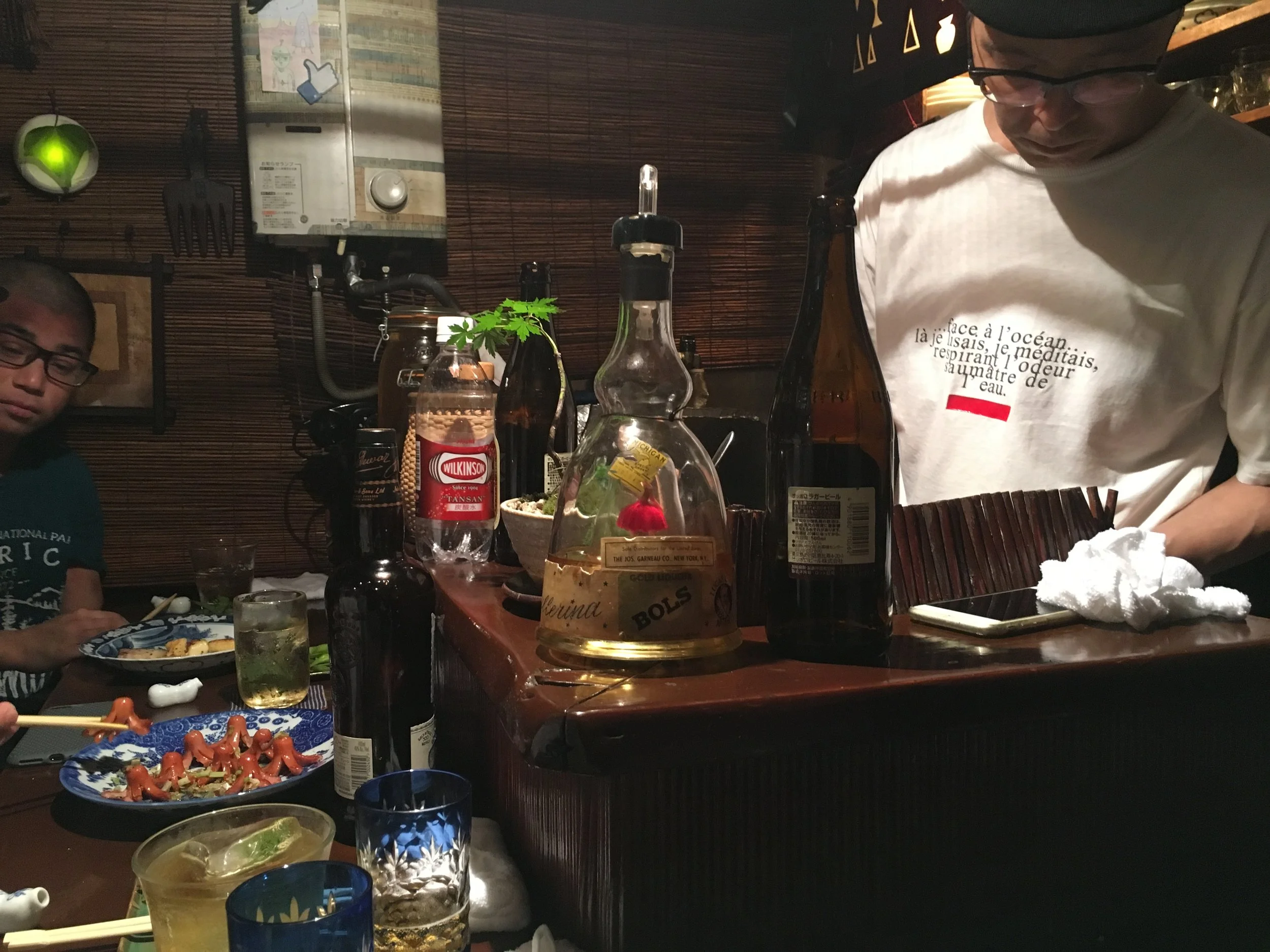Running to the Pastels of Tokyo
Imperial Palace
Asakusa, Image by Ethan Hansen
Komazawa Olympic Park, Image by Marek Okon
Why Tokyo?
View in between things, Ginza
Tokyo has nuance. There are many levels. Tokyo has sprawl like LA, but also height like NYC. It’s worth actively exploring both up and down, side to side. High-floor decorated kakigori in Ginza and basement salary-men bars in Shibuya.
Tokyo is its own world infused with traditions of ancient Edo, and expressed with animation of Japan’s today. It’s immaculate and tidy. It’s industrial and wooden. It’s all the pastels and it’s all the bright lights. It’s Tokyo.
Here are highlight places that warmed my heart of this softly colorful and brightly lit vastness.
Highlights
Skytree
Skytree is almost debilitating and a way to get a broad feel for the city as an entity. As one of the tallest points in the entire city, you can take an elevator up to Skytree and see the vertigo-inducing view from the top. Not only does it provide an aerial perspective of the city but it’s also an experience of zooming up so high in the elevator. There’s additionally a shopping emporium within that has souvenirs and such.
Nowhere else can you see the scope that Tokyo is. It’s surreal.
Shibuya Basement Haunts & Tiny Bars
Basement salary-men bars in Shibuya are all the rage. The levels in Tokyo don’t lie, they provide drenched intel as to the culture in the daily intricacies. If you’re a wanderer who enjoys immersing in “regular” life bustle abroad, but that’s “niche” regular too, these haunts are for you. The basement eateries found in Shibuya offer flavorful food that’s not certainly not catered to a tourist palate. They’re a hype that includes plenty to drink, and conversation that bustles to the brim. I love these haunts that give a feel for local life of the city.
Basement eatery
Shibuya Crossing
Shibuya Crossing
If you’re a Japanese fetishist locomoting through Shibuya’s crossing is a must to-do. Millions make this intersection day-to-day and it’s that place notorious to these streets. Beyond the actual crossing, the game rooms and animal cafes that surround this area are worth venturing into.
Find bright noisy gamer rooms that populate along up around the square reflective of Anime culture and energetic cartoons. There are also various themed cafes around as well, an owl cafe with a host of different sharp-eyed species, and cat and dog cafes respectively.
Going Out in Roppongi & Shibuya
Strong drinks and little amuse bouche eats
Roppongi over Shinjuku is the place for nightlife. There tends to be a mixed bucket around the neighborhood. It feels a bit more mature than Shinjuku, more worn-in and less touristy, but with as much buoyancy and places to scope out.
For the classic intimate bars from TV shows such as Midnight Diner, Shibuya has some of the quintessential tiny alleyways that lead into bars meant to seat 5-8 people. You’ll find them by the narrow walkways between main streets that indicate bars with their wooden windows. Curtain entryways mark entrances to these magically subdued spots.
It’s almost like a performance sitting at the counter of these bar masters who give you a whole experience, the tending of the bars that make this nightlife roar with quiet specificity. They’re an interesting contrast to the humungous nature of the city as a large entity itself, their minuscule spatiality makes the details enchanting.
Shopping
For shopping, Shimokitozawa and Ginza are the places for vintage one-of-a-kind finds and high-end treats.
Shimokitozawa street, Image by Charles Deluvio
There are a handful of little stores in Shimokitozawa where once you scour a few racks, a rare item, a special piece, can be feasted upon. There are also adorable chic spots to take repose and dwell at for a moment savoring that you’re in Tokyo.
Ginza is a more posh area to peruse department stores and international brand stores. If you want designer, here is your go-to, or beautifully fancy Japanese socks, scope the department stores here. If you come upon melon or peach sweets in Ginza, don’t hesitate…!
Where to Stay?
Shimokitozawa Apartment, or Ryokan Asakusa or Hotel Gracery Shinjuku
In addition to the shopping and cafes, Shimokitozawa is a treasure trove of chill atmosphere. It’s like the real-life manifestation of old-school anime printed on a whimsical newspaper. Its artisanal coffee spots are IT; overall a “laid-back Bohemian district” says Go-Tokyo.
Asakusa, Image by Ozgu Ozden
For something elegant, Ryokan Asakusa is a traditional architecture with tatami mats and rice paper doorways. It’s also located right near the looming Skytree.
Hotel Gracery in Shinjuku is a popular spot because of its location, affordability, and the ever-fun madness that is the cartoonish flair of Shinjuku. Notably, Godzilla’s upper body graces the lookout of the hotel making it a landmark site and cool place to stay especially for super fans of the monster and its Japanese make.
Chaos of Shinjuku, Image by Albert Dera
Buddhist Temple: Tamagawa Daishi
Statue right outside of Tamagawa Daishi temple
Probably the most surprising and novel experience in Tokyo is the Buddhist temple Tamagawa Daishi. Within its walls is a secret underground dark-lit maze. It’s a walking meditation and something that’s supposed to provide a tranquil enlightenment journey. It’s a completely dark walk-through that you do with your eyes closed in pitch black.
There are one or two stopping points in the middle with a sanctum of statues and the cave space alit. It’s quite unusual, a little scary, but more so captivating and serene. It’s an experience I recommend off-the-books sort of thing. This is why connecting with locals and getting their intel on the ground is so legit.
Ramen!
Traveling to Japan and sampling iterations of ramen as a total delight. No one hasn’t heard of ramen and its popularity is still burgeoning with thousands upon thousands, an alleged 10,000 shops throughout the city. There’s so much variation to this dish.
If you’re a hardcore fan, I suggest a ramen tour to sample 6 bowls at 3-award winning ramen shops.
Exploring Meguro
Meguro is another area that evokes a softness, a nostalgia about the plain residential-ness of its neighborhood. The area is like an open space of interior design through the aesthetics of its buildings that are with vertical intention but totally artistic and some even industrial retro in appeal. Meguro also hosts a theme of home appreciation shops from furniture to stationary or book shops. During springtime, this area along the river is flooded by those who flock for the cherry blossom blooms. It’s an area worth venturing to.
*Safety tip
Tokyo is massive. My tip is to connect with at least three people to help sort through the adventures so the city doesn’t swallow you up. This can include local tour intel.
Tokyo is also a practical hub to travel to other smaller areas and as a base reference point for around the country.
Bottom line
Tokyo is a mega city. And one that also embraces an encapsulating diminutiveness in the pockets that make up its millions.
It’s one of those cities that represents itself in such specific authority. Like all Japanese things, there is a discipline to it, it is a singularity in its very Tokyo and Japanese-ness. And at the same time, there is so much flex in how it can be perceived by outsiders and visiting tourists.
As mentioned, there are levels up and down, side-to-side that would take decades to permeate all of. However, if you’ve ever been compelled to understand the beauty of something Japanese, Tokyo is a sure bet to give you answers not simply, but ones that will continue your brooding into this country and its arch of neon lights.

